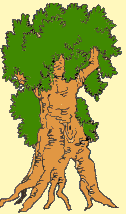Xylopia æthiopica
Xylopia æthiopica
French: Selim pepper, Black pepper from Guinea, Wolof: Xiar. Malinke: Kani. Hausa: Kimba, Goun and fon: kpéjélé.
Plant Family: Annonaceae
Native to tropical Africa (from Ethiopia to Ghana) the fruits of Selim pepper
Look like bean pods, rather small. They are dark brown, cylindrical, 2.5 to 5 cm long, and 4 to 6 mm thick; The outline of the seeds are visible from the outside. Each pod contains 5 to 8 kidney-shaped seeds about 5 mm long. The pods are aromatic, but the seeds are not.
Sensory characteristics
Aromatic, a little pungent (spicy), and slightly bitter.
In Selim pepper fruits, the essential oil (2 to 4.5%) consists mainly of ß-pinene, 1,8-cineol, a-terpineol, terpinene-4-ol, paradol, bisabolene, and other terpenes. In other research, linalool (E) -ß-ocimene, a-farnesene, ß-pinene, a-pinene, myrtenol, and ß-phellandrene have been identified, as well as traces of vanillin and 3-ethylphenol (Journal of Agricultural and Food Chemistry, 47, 3285, 1999)
Selim pepper was used as a pepper substitute in Europe but it almost disappeared with the massive importation of black pepper from India from the 16th century. Later, Selim pepper was sold only as a pepper substitute (or substitute) in times of war or lack of resources; The last time we found it was after the Second World War until the 1960s. It is now difficult to find it outside the countries of production.
The selim seed is found from Ethiopia to Senegal.
Its taste is a mixture of cubeb and nutmeg. Its use is frequent in all countries where this plant is found in the wild.
It is used as a spice but also for its medicinal and aphrodisiac properties.
In Senegal, it is used to flavor Touba coffee, a traditional drink from the Mourides, but also to make aphrodisiac drinks.
NB: The fruits are present in almost all herbal teas in West Africa because of their multiple properties: febrifuge, antibiotic, cholagogue, aphrodisiacs, dewormers, depuratives, aromatic, etc. fruits are rarely used on their own.
Add a comment























